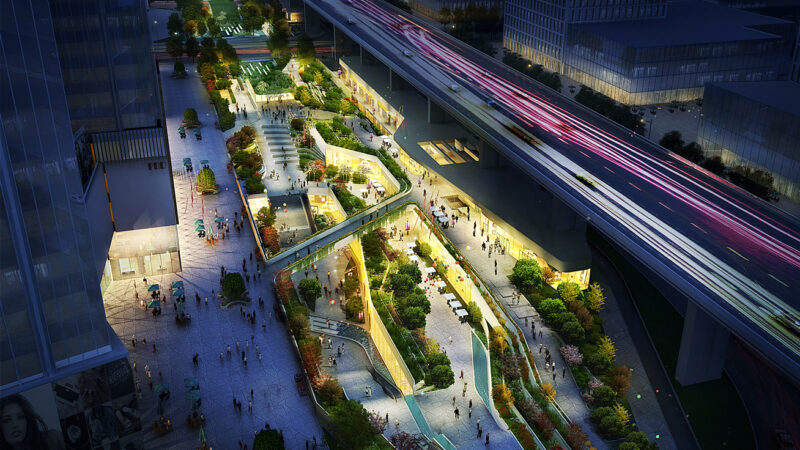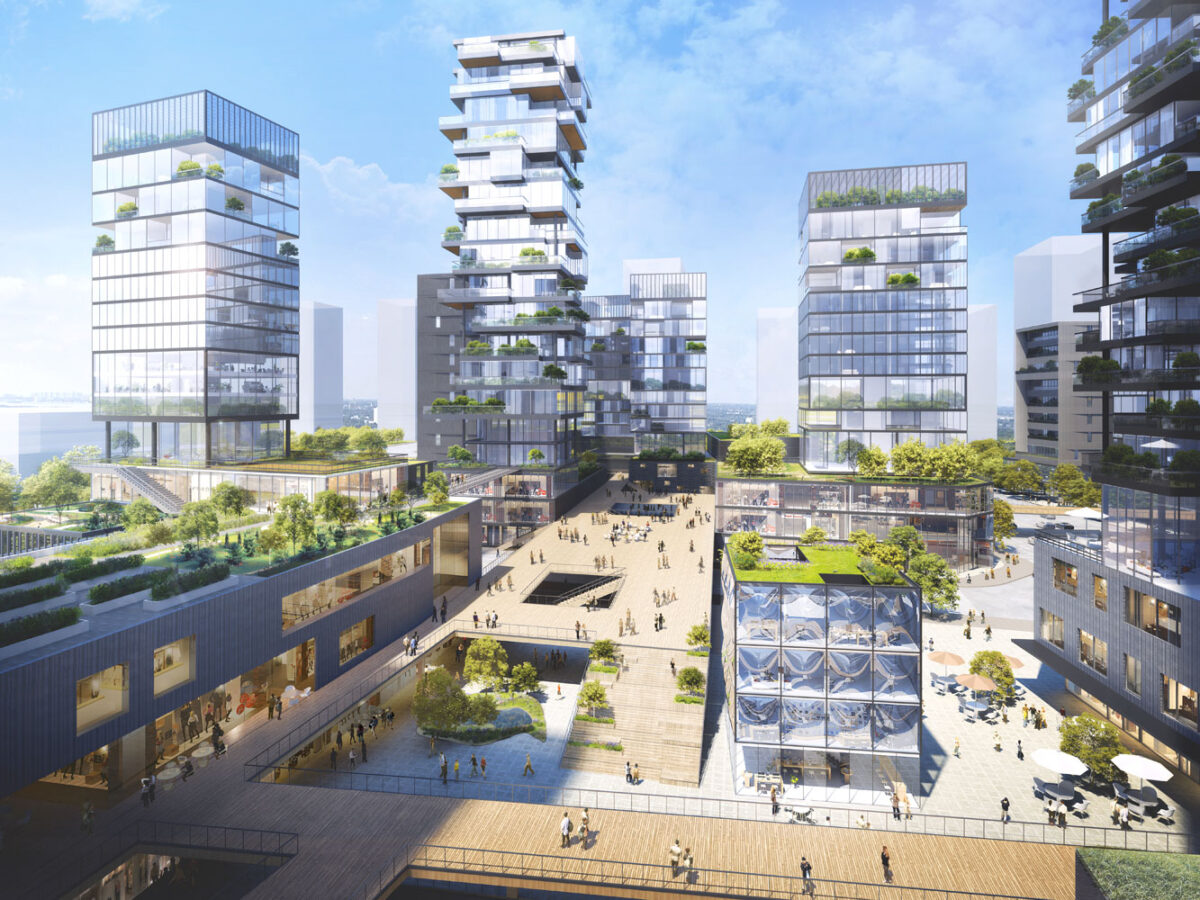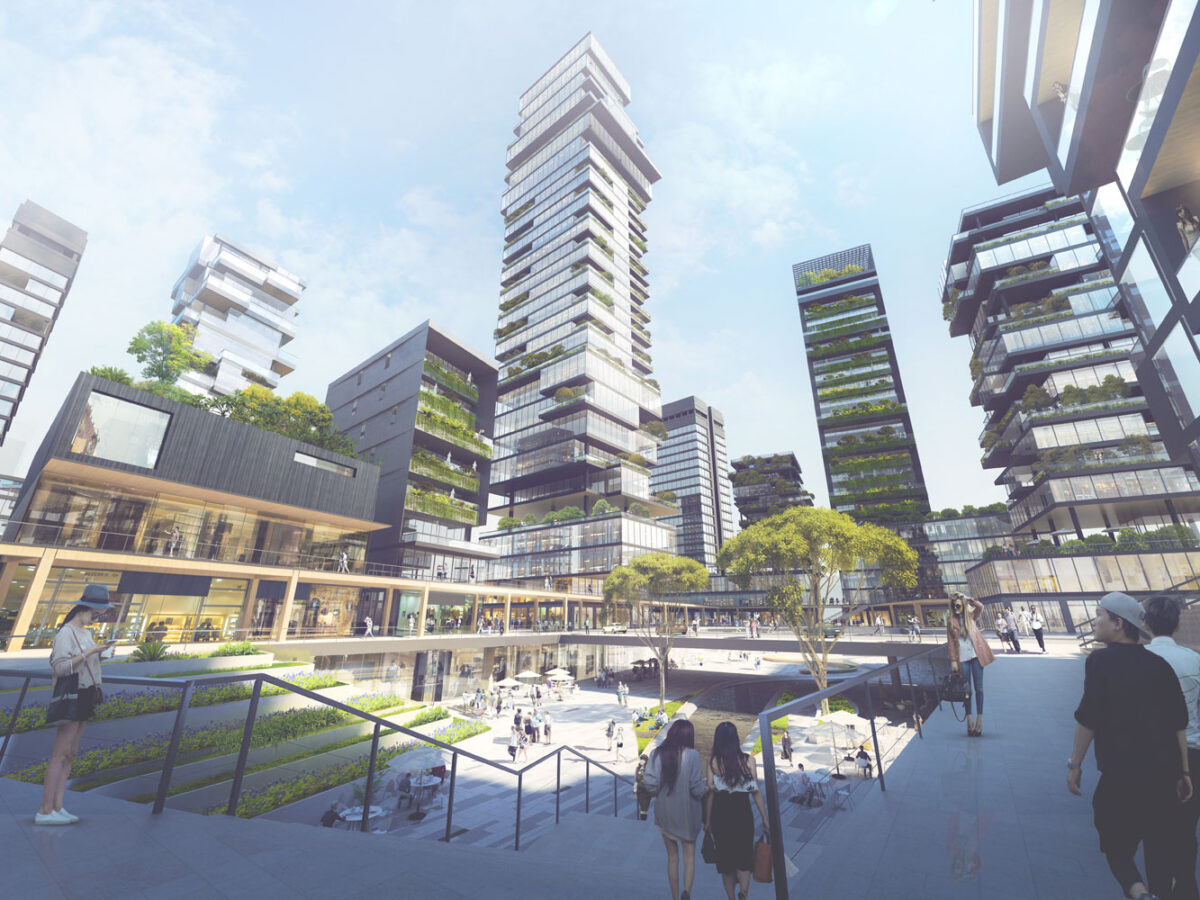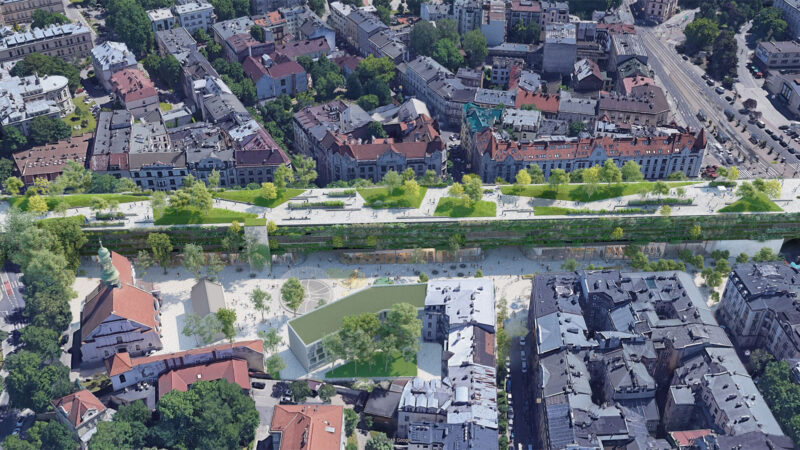
Dong Feng Station Area
Beijing (CN), 2019
Information
The Dongba area, located at the northeast side of Beijing, is undergoing a huge transformation. An entirely new district with residences, office space and urban facilities will be developed around two metro stations and a bus station. Dong Feng Station Area is the mixed-use urban core of this development.
How to design an attractive urban center in five city blocks separated by 8 lane highways while at the same time creating a well-functioning multimodal hub for people and logistics? But also, how to promote green mobility and public transport in Beijing, these were the first challenges of this assignment. How to connect the pedestrian networks of this central area with the blocks surrounding this urban core and was the second.
An extensive network of public spaces and pedestrian walkways connects the metro stations and the bus station with other parts of the new district. In this central area one can find a sunken plaza that connects to the metro entrances and a raised plaza that connects to the bus station below. These public spaces are interconnected with underground passages and elevated walkways crossing the streets. This pedestrian network is the backbone of a vibrant center which brings all urban functions and facilities together.
We consider this project to be a good example of the MicroCity concept and the promise it offers. To make this development climate proof, the whole area is covered in green. This not only helps to absorb rainwater, it also prevents heat stress, boosts biodiversity and contributes to a healthy ecosystem in the area. In principle, with a development like this, a range of sustainability issues can be solved by making use of the relative proximity of all different functions. To make things easier, an underground infrastructure tunnel creates flexibility for future changes or technological developments.
Already today, there are many options to create a net zero energy neighborhood with collective heating and cooling. One of those systems makes use of the temperature difference between summer and winter. Mixing functions also has benefits, like power generation and demand can be exchanged if offices are mixed with residential functions. And it is relatively easy to solve urban logistics with neighborhood hubs which can also be used to facilitate the circular economy. At the neighborhood level, wastewater can be treated and reused to make it water neutral and independent from external sources. With LED- based indoor farming, even food can be grown within the neighborhood. Cultural facilities and attractive public spaces can help to enhance social life and community spirit. All these new elements contribute to making happy, sustainable and partly self-sufficient cities.
Statistics
| Name: | Dong Feng Station Area |
| Location: | Dongba Area, Beijing (CN) |
| Program: | Integrated development on and around the Dong Feng metro station: apartments, office spaces, hotel, commercial spaces. |
| Surface area: | 350.000 m2 |
| Assignment: | Transit oriented development strategy |
| Period: | 2018-2019 |
| Status: | Completed |
| Client: | BIAD (Beijing Institute for Architectural Design) and BIIC (Beijing Infrastructure Investment Company) |
Credits
| VenhoevenCS: | Ton Venhoeven, Jos-Willem van Oorschot, Li Gubai, Klaas van Olphen, Álvaro Saez O'Farrell, Sofia Valentini |
| Images: | VenhoevenCS |










